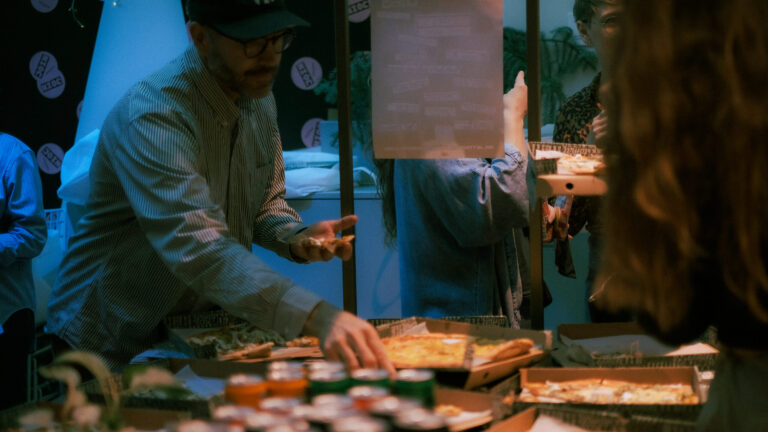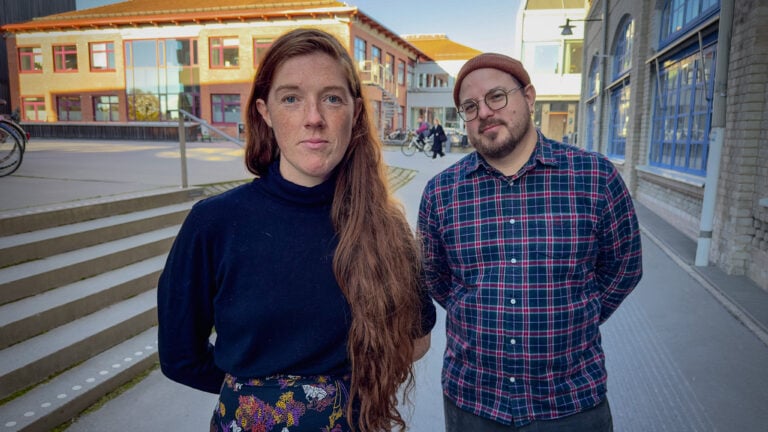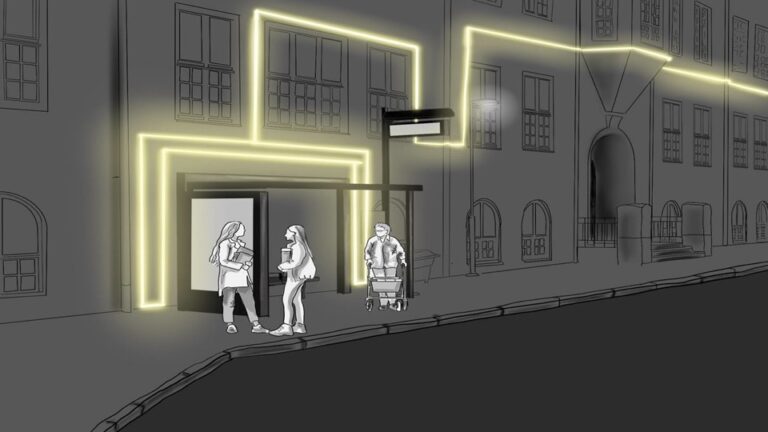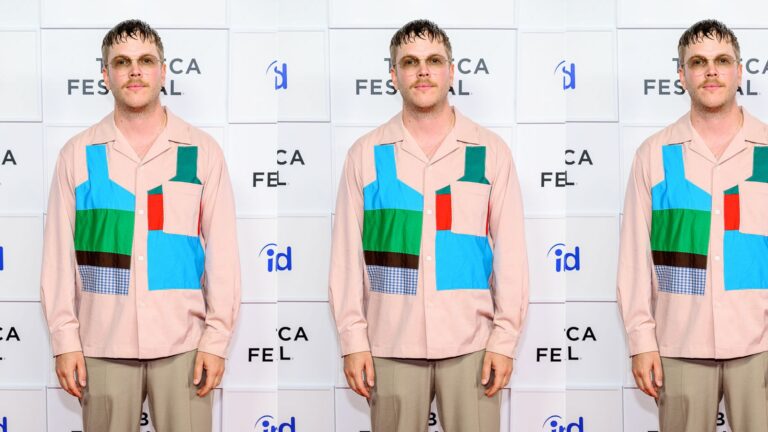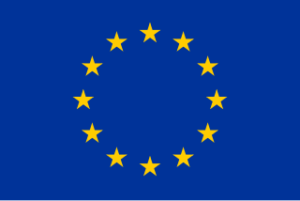The design process is a powerful tool for social change - something Karina and Kasimir Suter Winter want more people to discover. Through their company Parti Design, they work with regenerative and co-creative design, aiming to create places and services that are not only sustainable, but also engaging and inspiring.
The story of how Parti Design came to be starts at an architecture school in Prague. A programme that attracted students from different parts of the world as it was one of the few architectural programmes in Europe at bachelor level with English as a language. Karina, with her roots in Russia, and Kasimir, with his roots in the United States, were both part of the melting pot of nationalities and cultures that met here.
Already during their time in Prague, their commitment to inspiring and teaching about the design process arose, something they took with them and developed when they moved together to Umeå and the School of Architecture. During their studies in Umeå, they also had the idea of starting their own agency.
With their firm Parti Design, they challenge the traditional image of what an architect does. For many architects, the path to work is fairly streamlined, with most ending up in an architectural firm where the work is governed by the client's budget and wishes. Karina and Kasimir realised that such an environment risked stifling the creativity and freedom they had experienced during their training, where ideas were allowed to flow freely. They wanted to create opportunities to harness creativity and realise their ideas and visions.
We felt that we didn't want to work like the traditional architects, we want to feel free and be able to create change. We need to be the example that shows that you can do it this way, show that there is another way," says Karina.
Co-creative design for community development
Their goal was to create an agency that focuses on regenerative design and participatory design, and that's how Parti Design came to be. The name itself is inspired by the idea of participatory design. This means that architecture and design should not be a top-down process with the architect as the sole decision-maker. Instead, Karina and Kasimir strongly believe in including clients, the community, experts and end users in the creation process, to find the best solutions together.
"We wanted to create something that involves more people and something that allows people to participate in the design process. The best solutions come when multiple perspectives come together," says Casimir.
The multidisciplinary approach means their work ranges from architecture to educational projects and social innovations. A central part of their work is creating design for the good of society, rather than catering to the luxuries of a few.
They have initiated several projects to address needs they identified themselves in their local community, such as the Umeå Together. Where they co-founded Sweden's first crowdfunding platform for non-profit initiatives, Massvis Association.
There are so many people walking around with good ideas and we wanted to help them realise them. We wanted to create a platform where people could come together and create change in their own neighbourhoods. Karina.
One of the good ideas that came out of Umeå Together is Umeå cold bath. A non-profit organisation that aims to build a floating cold bathhouse on the Ume River. During the coming winter, they will launch the first sauna, which Parti Design has helped to design.
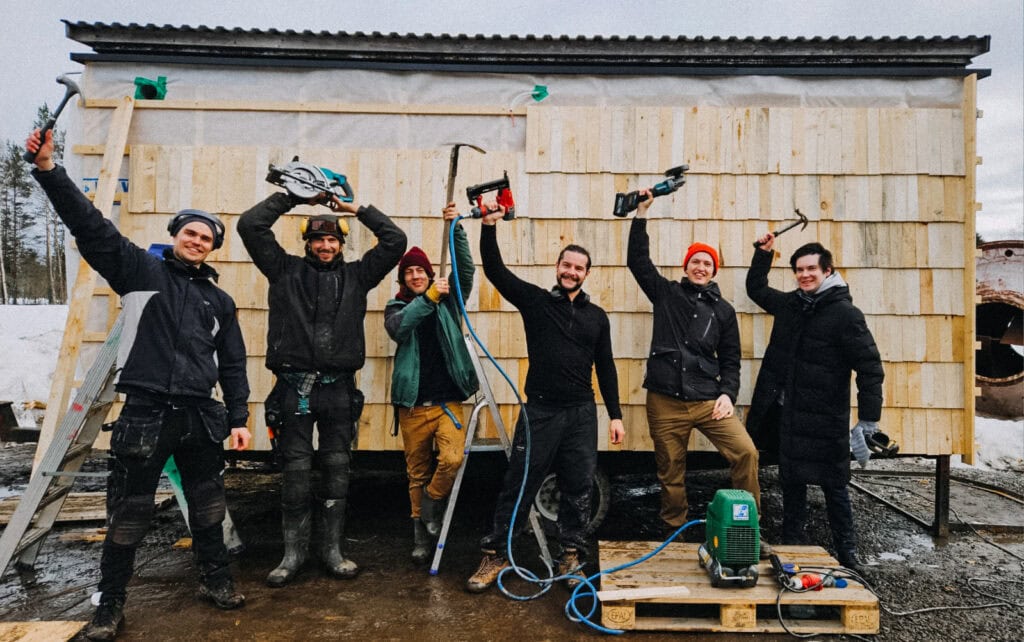
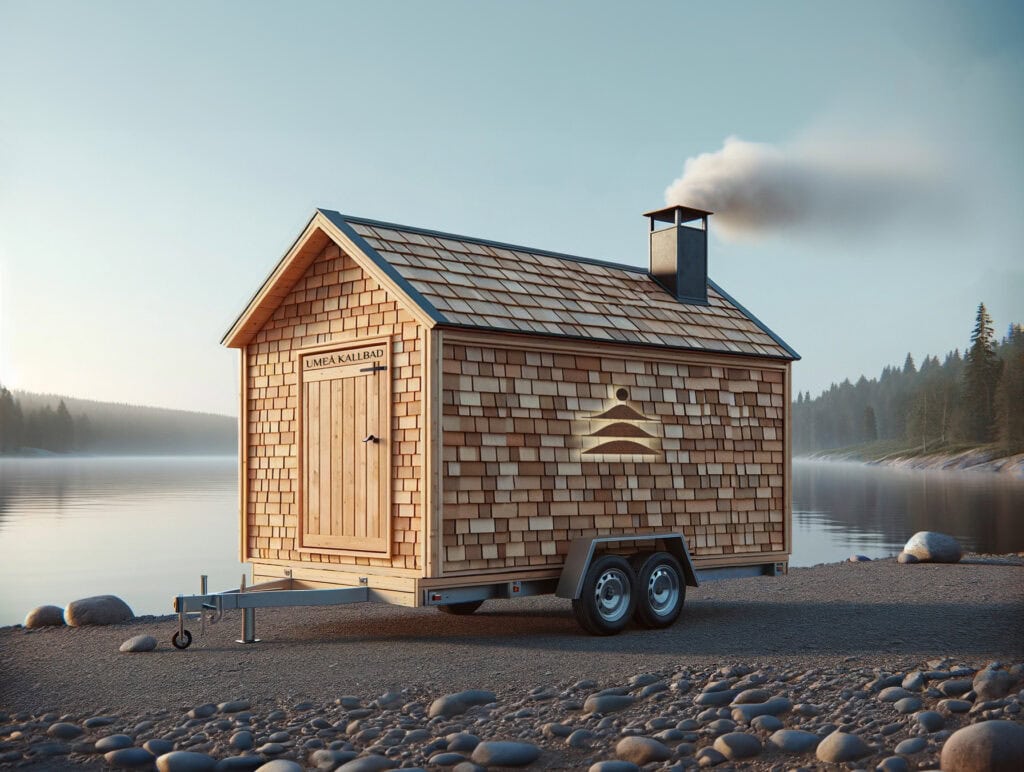
Living ecosystems
Parti Design also bases its projects on regenerative design, a design principle that not only minimises environmental impact but also helps to improve it. This approach creates places and systems that, like nature, function as living ecosystems.
Everything that lives regenerates all the time, including you and me, says Casimir. Understanding this is the basis of regenerative design. It's about seeing nature's living systems and our societal systems as parts of a whole, and then working to bring them into balance with each other.
One example they have worked on is their concept Ume River Restoration for the Ume River, which aims to recreate natural river banks that improve conditions for both people and wildlife.
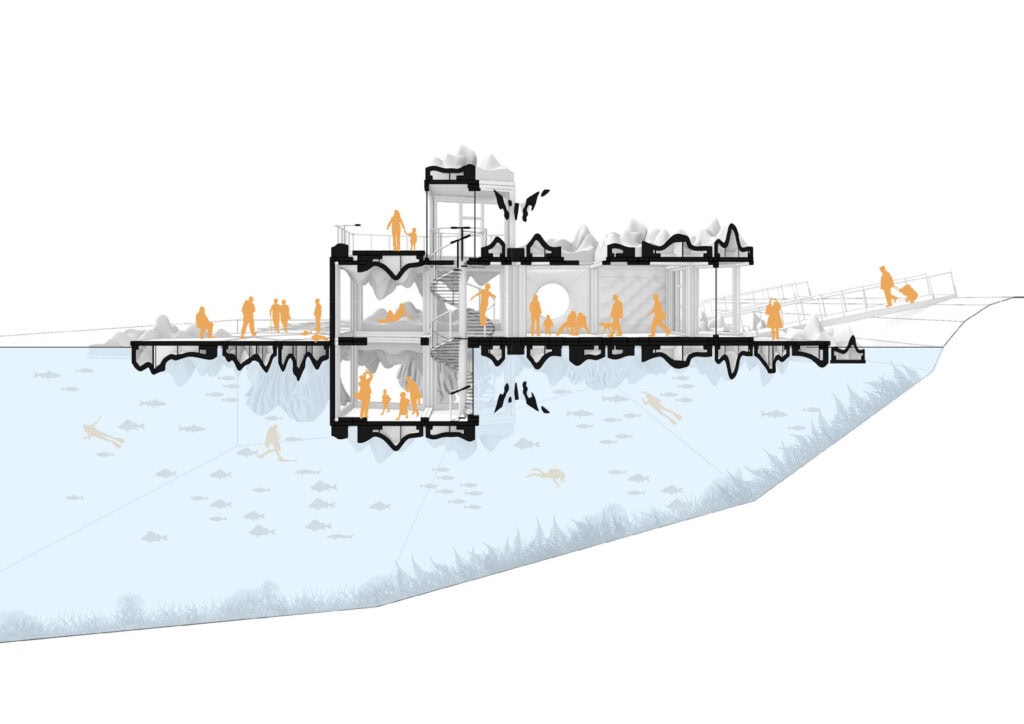
The Ume River used to be rich in salmon, but log driving changed the river's natural environment. Log driving cleared the river banks and destroyed important spawning grounds for salmon, greatly reducing the population. By creating floating platforms with coral-like bottoms, salmon can be given the opportunity to return to the river," says Karinaand at the same time provide a place for people to spend time in the Ume River.
DIT Egnahem - An innovative self-build
Another of Parti Design's exciting projects is DIT Egnahem - an award-winning initiative that they hope will help solve the housing shortage in Sweden. DIT stands for "Do It Together", and Egnahem is a reference to the Swedish Egnahem movement that emerged in the late 19th and early 20th centuries.
The aim of the movement was to empower people to own their own homes, which would raise living standards and create safer communities. With DIT Egnahem, Parti Design hopes to create a similar movement, adapted to our times.
Today, building your own house is expensive and difficult, but we want to change that and also give people the chance to feel a stronger connection to their home by being involved in the building process," says Casimir.
Through DIT Egnahem, they offer a self-build kit based on the open source solution WikiHouse. In this way, people can build their own homes, which both reduces costs and strengthens the personal connection to the home. The project is based on the so-called 'IKEA effect', where people value more highly what they have helped to create.
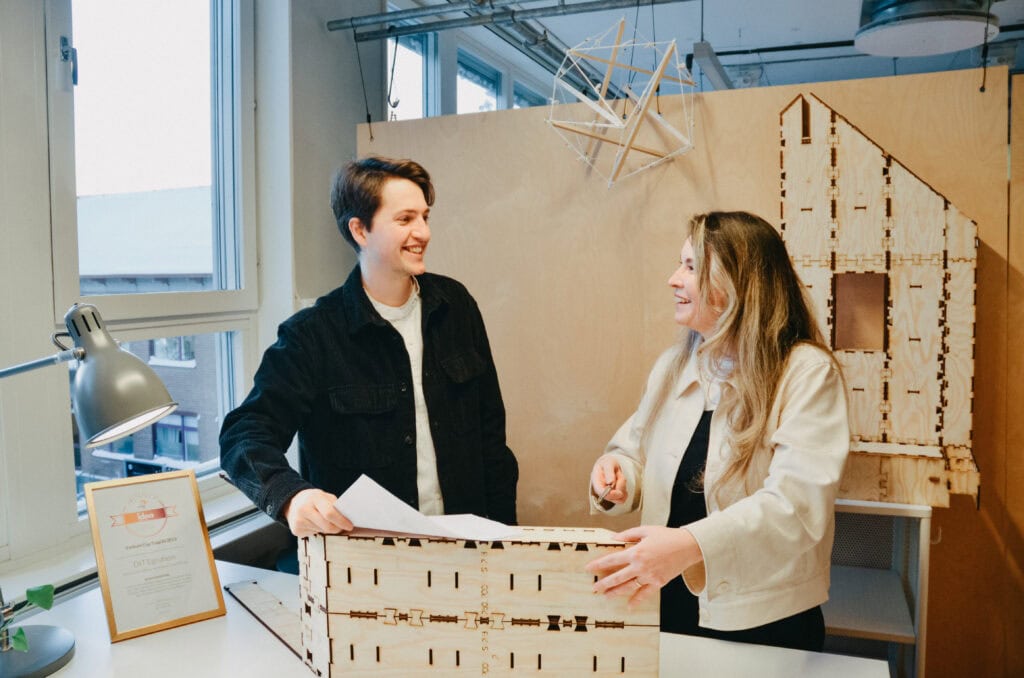
They also have a strong focus on sustainability, looking at both sustainable materials and energy efficiency. In addition, the need for transport is minimised as it is enough to send data files to manufacturers with CNC technology anywhere in the world.
They hope that the first house will be ready in the summer of 2025, and that this will be the beginning of a change in house building.
Design as a tool for change
Parti Design's goal is to inspire more people to use design processes and creative thinking to solve complex problems and change their world.
Something special happens when we teach the design process and see how people have an 'aha' moment. They realise that they can impact the world with their creativity, and that everything around them is designed by people, just like them. Suddenly, the world's problems feel less overwhelming. Casimir.
It's about creating a movement and letting more people discover the power of design. We want to give people tools to help them create positive change," says Karina.
Design is becoming a force for changing the world - in both big and small ways.
TEXT: Maria Persson
COVER IMAGE: Julia Mubarakshina


